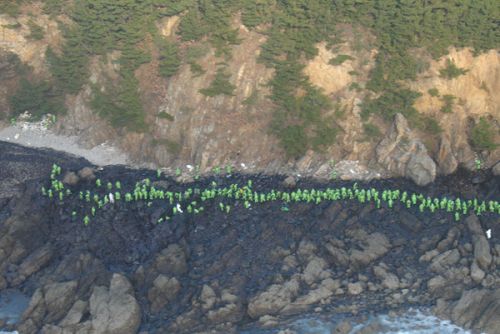Selection Guide for Oil Spill Response Countermeasures

Because oil spilled onto the water's surface quickly weathers and becomes difficult to work with, there's usually little time for spill responders to research less familiar countermeasures such as solidifiers, dispersants, shoreline pretreatment agents, and elasticity modifiers. For this reason, responders rely heavily on more familiar technology such as booms and skimmers.
A guidance document created by the EPA provides detailed information about 10 categories of less-familiar response technologies, as well as data about the products within those categories that are on the National Contingency Plan (NCP) Product Schedule (or that need not be listed, in the case of sorbents). The information in the Selection Guide is designed to be applicable nationwide within the U.S.
An Interactive Selection Guide for Oil Spill Response Countermeasures is under development; however, until it is available, please refer to the National Oil and Hazardous Substances Pollution Contingency Plan (NCP), Subpart J, Product Schedule for a current list of chemical countermeasure products that can be used on oil spills. The EPA provides information on these pages: National Contingency Plan Subpart J and NCP Product Schedule (Products Available for Use on Oil Spills). You may also want to refer to the 262-page PDF version of the Selection Guide from 2009.
For additional information about the NCP Product Schedule, please contact the EPA National Contingency Plan Product Schedule Information Line at 202.260.2342.
More Information about Alternative Response Technologies
Dispersant Application Observer Job Aid: This field guide serves as a refresher for people who have completed training in dispersant application observation.
Characteristic Coastal Habitats: Choosing Spill Response Alternatives: This job aid illustrates typical attributes of North American coastal habitats at risk from oil spills. The text describes each habitat and discusses how oil is likely to behave there, as well as considerations for treating oil.
Shoreline Countermeasures Manuals: These tools, customizable for the region, are for people who must plan and implement shoreline countermeasures in order to reduce the ultimate environmental impact and cost of an oil spill.
Alternative Response Tool Evaluation System (ARTES): ARTES is a decision process that responders can choose to follow when they need to evaluate new technologies or products for potential use during an oil spill. It was developed to aid in evaluating non-conventional alternative countermeasures, but it can also be used to evaluate proposed conventional countermeasures.
How Would Chemical Dispersants Work on an Arctic Oil Spill? Industry, government, nonprofits, scientists, and the public all are wondering about potential impacts of using chemical dispersants on an oil spill in the frigid waters of the Arctic Ocean. Take an inside look at industry-sponsored Arctic research on this topic.
